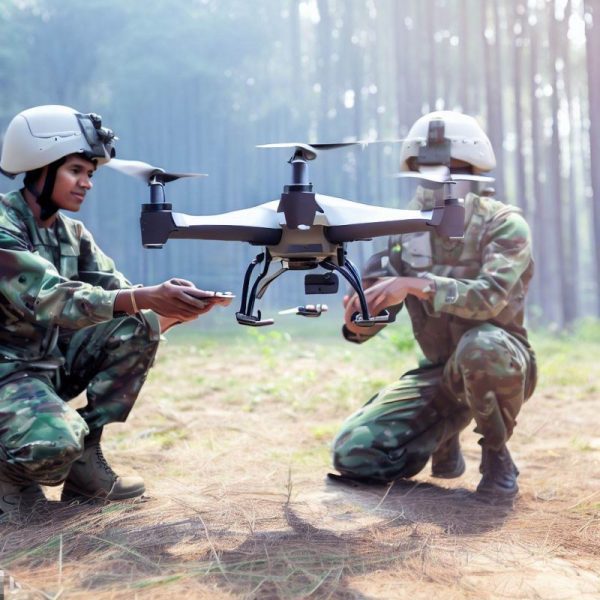Drones, also known as Unmanned Aerial Vehicles (UAVs), are aircraft that operate without a human pilot on board. They can be remotely controlled by a human operator or can fly autonomously based on pre-programmed flight plans or more complex dynamic automation systems. Drones come in various sizes, shapes, and configurations, ranging from small consumer quadcopters to large military surveillance or combat vehicles.
Key features and components of drones include:
- Power Source: Drones are powered by batteries, gasoline engines, or other energy sources, depending on their size and purpose.
- Propulsion System: Most consumer drones use multiple rotors, commonly quadcopters with four rotors, but other configurations like hexacopters (six rotors) and octocopters (eight rotors) also exist. Military drones may use traditional fixed-wing designs or helicopter-like rotor systems.
- Navigation and Control Systems: Drones are equipped with sensors such as GPS, accelerometers, gyroscopes, and magnetometers for navigation and stabilization. They use controllers or onboard computers to process data and adjust their flight accordingly.
- Communication Systems: Drones often communicate with a ground control station or operator through radio signals or other communication technologies.
Drones have a wide range of uses, including:
- Recreational Use: Many people use drones for aerial photography, videography, and recreational flying.
- Commercial Use: Industries such as agriculture, construction, and real estate utilize drones for surveying, mapping, and monitoring.

The visuals above is an example of drones being used for commercial or recreational purpose as they are both similar but used in different ways.
- Delivery: Drones can be deployed in emergency situations to survey disaster-stricken areas and locate survivors.

The image shows just one of the many companies all over the world using drones as delivery service which is now becoming more popular as it is being integrated into many companies like DHL, Walmart, etc.
- Environmental Monitoring: Drones are used for studying and monitoring environmental changes, wildlife, and ecosystems.
- Military and Defense: Military drones are employed for surveillance, reconnaissance, and, in some cases, combat operations.

Drones are even in used for environmental monitoring and the military as it is a safer way to get a better clear understanding of the sorrowing areas and get a better picture of what is going on without putting people in harm.
This is just a few examples of the many ways drones are used in today’s world which goes to show how big our audience will be, we can target big companies, the police force and most importantly this is a product that can be used by anyone and everyone which means there will be a limitless number of different audiences for the taking.
Benefits: Successfully integrating drones could lead to significant benefits in various industries, including
- Faster and more efficient delivery, including in remote areas.
- Improved disaster relief efforts and search and rescue operations.
- Precision agriculture practices for increased efficiency and sustainability.
- Safer and more efficient inspection of infrastructure.
Feasibility: Integrating drones is becoming increasingly feasible due to:
- Technological advancements: Improvements in battery life, range, and automation.
- Regulatory progress: Development of frameworks and guidelines for safe drone operation.
- Growing public acceptance: Increasing awareness of potential benefits.
Cost and resources required
The average price of a drone can range from $50 to $10,000.
- Beginner toy drones range from $30 to $90,
- while entry-level camera drones range from $299 to $499.
- Mid-level consumer drones are expected to range between $600 and $1,000.
- High-end are priced at $3,000 and above.
Drones are revolutionizing the way we interact with the world around us. From capturing breathtaking aerial photographs to delivering essential supplies and performing critical inspections, these versatile machines are transforming countless industries. Their affordability, ease of operation, and ability to access difficult-to-reach areas make them a valuable tool with vast potential.
As drone technology continues to evolve, we can expect even more exciting applications to emerge. From personalized delivery services and precision agriculture to disaster response and environmental monitoring, the possibilities are endless. We must ensure responsible and ethical development and use of these powerful tools to maximize their benefits for society while mitigating potential risks.
By embracing drone technology and fostering collaboration between researchers, developers, and policymakers, we can unlock new possibilities for a more efficient, sustainable, and interconnected future.
To finalize I will be showing you a video presentation put together by our team:


